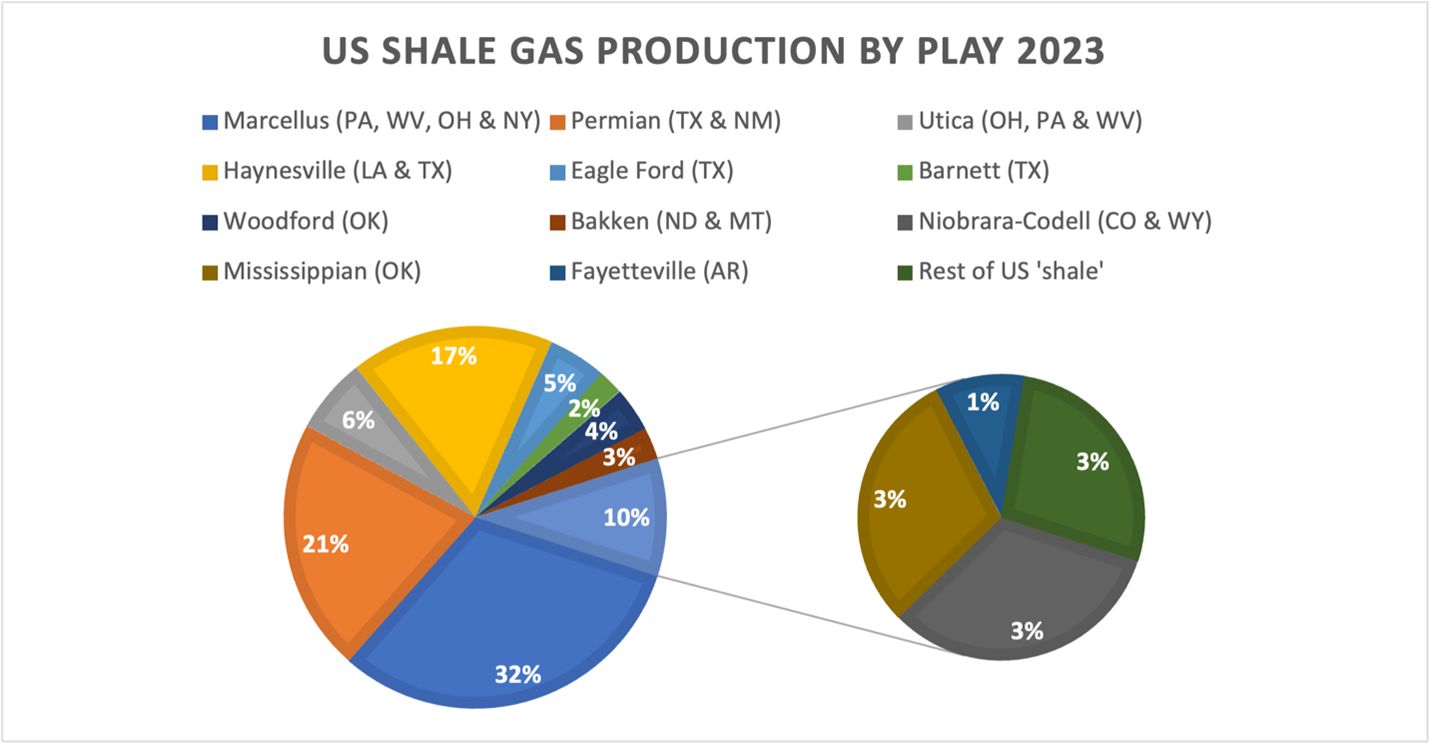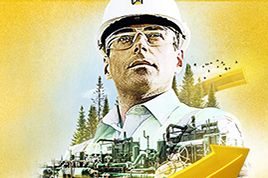If you already have an existing account with another Cat App, you can use the same account to sign in here.
One Account. All of Cat.
Your Caterpillar account is the single account you use to log in to select services and applications we offer. Shop for parts and machines online, manage your fleet, go mobile, and more.
Account Information
Site Settings
Security
A History of Three Shale Formations: Part Two – The Marcellus Shale
The Marcellus Shale plays a pivotal role at home and abroad.
By Danielle Foelber | Posted October, 2023
The History of the Marcellus Formation
The roots of natural gas extraction trace back to 1821 in Fredonia, New York, where local residents united to drill a well merely 27 feet deep near Canadaway Creek. A crude pipeline constructed from hollow logs and tar-soaked rags transported only enough gas to create the light of a couple candles.
By 1850, the well's depth extended to 70 feet. In 1858, a second well was drilled to more than 200 feet deep, kindling a fervor for exploration along Lake Erie's shoreline that reached Northeast Ohio. By the turn of the 20th century, nearly all homes and businesses in the area used natural gas sourced from the region’s shale.
Black, organic-rich shales, fractured shales and siltstones that are above and interbedded with the black shales provide the formation’s natural gas supply. It became commonly known that the Marcellus held a significant amount of natural gas, however accessing it in a way that generated a consistent flow of the fuel remained elusive.
That is, until hydraulic fracturing was developed. The introduction of fracing forever changed the outlook and access of the Marcellus.
The Marcellus Shale Today
The Marcellus Shale extends from parts of New York, Pennsylvania, Ohio, West Virginia, Maryland, and Virginia. By the end of 2022, the play dominated U.S. natural gas production. It’s emerged as a prime spot for M&A activity in the oil and gas sector, and has produced approximately 80 trillion cubic feet (Tcf) of natural gas since 2007.
Leading shale performers collectively produced 2.9 million barrels of oil equivalent per day (MMboe/d), 30,065 barrels per day (bbl/d) of oil, and 17.3 billion cubic feet per day (Bcf/d) of gas in the Marcellus Shale during the first half of 2022. Continued activity and investment in the formation underpins expectations for the play to produce 38 Bcf/d in select areas by 2025.
The abundant natural gas resources of the Marcellus Shale not only benefit North America but also European countries. With current geopolitical tensions in Eastern Europe, the liquid natural gas (LNG) the play supplies enables the United States to continue to be Europe’s top LNG seller which helps European economies recover. As depicted in the pie chart below, Marcellus production significantly contributes to the broader U.S. – and global – energy landscape.

Source: EIA, estimated monthly production derived from state administrative data
Related Content
-
The Cat® Blog
The Cat Blog is dedicated to sharing expert advice and industry knowledge to help our customers do the work better. Read our customer stories, tips and resources.
Learn More -
Oil & Gas Home
Discover Caterpillar oil and gas solutions and applications. Designed to be durable and efficient, our oil and gas generators are prime movers that deliver low operating costs.
Learn More -
A History of Three Shale Formations: Part One – The Permian Basin
The Permian formation is a unique and noteworthy part of a larger historical mosaic.
Learn More




